From easels to arcs:
meet our (welding) masters

Form over function? Not quite, but welding can no longer be thought of as just an industrial process alone. While a solid join between two metals was all that mattered in the past, we are now seeing a fusion of technology and aesthetics to create a unique symbiosis. At the same time there has been a rise in the number of creative individuals who have opted for the welding torch as their tool of choice. Though few in number, the scene has defied its size to create a new form of expression: welded art. We present four of these extraordinary individuals, whose works are as diverse as their stories—from delicate fantasy worlds to life-size steel sculptures. And as a bonus, we reveal how many hours of work it takes to weld a sculpture of a tennis player.
Cars, buildings, bridges—in many areas of our life, welding plays a crucial role. Metals are joined together to produce complex constructions. It’s a technology that demands high levels of knowledge, experience, and skill. At the same time it’s also expressing art, a manual skill with unlimited potential in terms of aesthetics. One definition of art is, “The conscious use of aptitude and creative fantasy, particularly when creating aesthetic objects”. How broad the range of objects that welded art can create is exemplified by Rich Baker, Jordí Diez Fernandez, Andrea Stahl and Cédric Surmin — four creatives who have dedicated themselves to the world of sculptural metalwork and forged careers for themselves from their passion.
Welded art from nature
A graceful eagle, a wise owl, a majestic lion: Rich Baker has always been attracted to wild animals. The Canadian artist learned to weld at a young age and initially put his knowledge to good use in industry. Decades slipped by before he turned his attention to welded art. Another completely different art form stole his heart in the meantime: music. As a touring Country musician, he discovered what it meant to be free and independent, and how to let life lead you where it felt like leading you.
Following this formative period in his life, Rich went back to work as a welder. But after a while, he realized that he was no longer cut out to spend every day indoors working. “I’d been out on the road as a musician for so many years, and now I needed more freedom,” he recalled. You have to strike when the iron’s hot, so he spent a lot of time outdoors, allowing himself to be inspired by the animals and nature. Soon, he started welding sculptures of wild animals, which became the launchpad for a successful career as a metalwork sculptor.
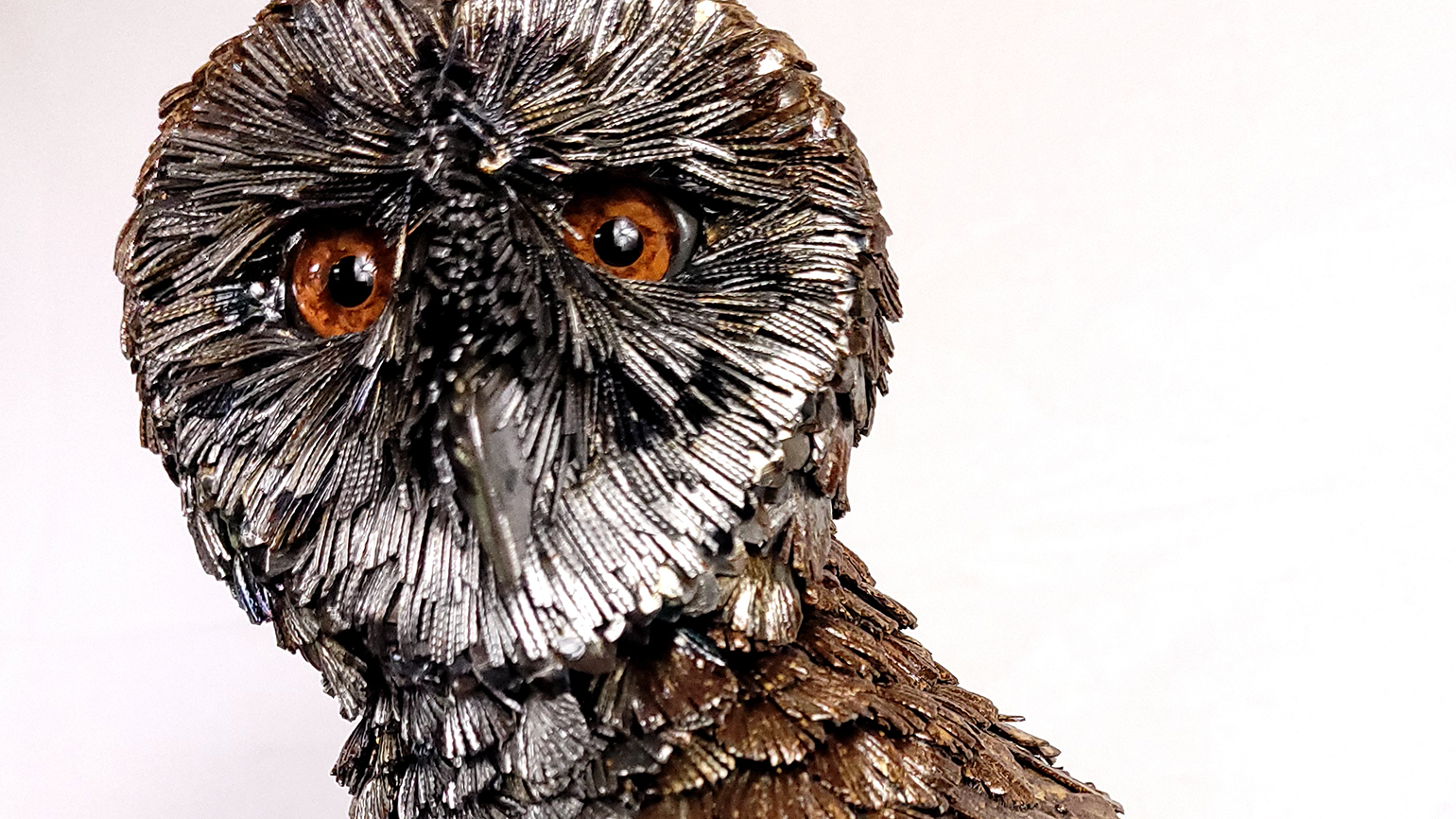
“My hands know what to do”
Rich Baker is an intuitive kind of guy who doesn’t work to any type of fixed plan. “It may sound crazy, but when I’m welding, my hands seem to know exactly what they have to do to make the piece look real natural when it’s finished. I’ve no idea where that comes from. The less I think about it when I’m working on something, the better it turns out,” is how Rich describes his approach.
His “impulsive welded art” has a single objective: to capture the grace of animals in their movements and being, and thus create an optical illusion. He uses specific methods to achieve a range of special color and luster effects. By spraying water onto his artworks, he can make the metal rust naturally. In other situations he might use a spray to add a yellow or orange hue to the mane of a lion, for example. Baker now has his own welding shop and lives the life he always dreamed of: surrounded by the idyllic Canadian countryside, free and untrammeled in his working day, and spurred on by his ideas for his next work of art from the animal kingdom.

The human form as a welded object
From Canada let’s return to Europe, to Barcelona—a city of art, design, and architecture. This is where Jordí Diez Fernandez lives and works. Jordi is a sculptor, who has become a specialist in a particular type of welded sculpture. He describes his artistic activities as “the only job I’ve ever had” and his artistic predestination as “a sculptor from the day I was born”. He dedicated himself to sculpture shortly after obtaining his degree in the visual arts. When he first started he also employed other methods, such as woodcarving, but his total focus for the last 15 years or so has been welding technology.
Diez Fernandez is inspired by the classical art of the ancient world and the Renaissance, so it’s the human form that lies at the center of his work. “What I find most exciting in life are differing personalities. They’re what interest me, and I want my work to portray the energy they exude.” You couldn’t wish for a clearer statement of his artistic intent. He still retains his passion for welding itself: “The fact that I melt the metal and then finally bring it all back together again—that’s the technical aspect of my work—is something that still intrigues me, even after all these years.” Creating sculptures continues to be not just an artistic endeavor, it’s also a ”technological miracle”.
Photo: Xavier Pladellorens
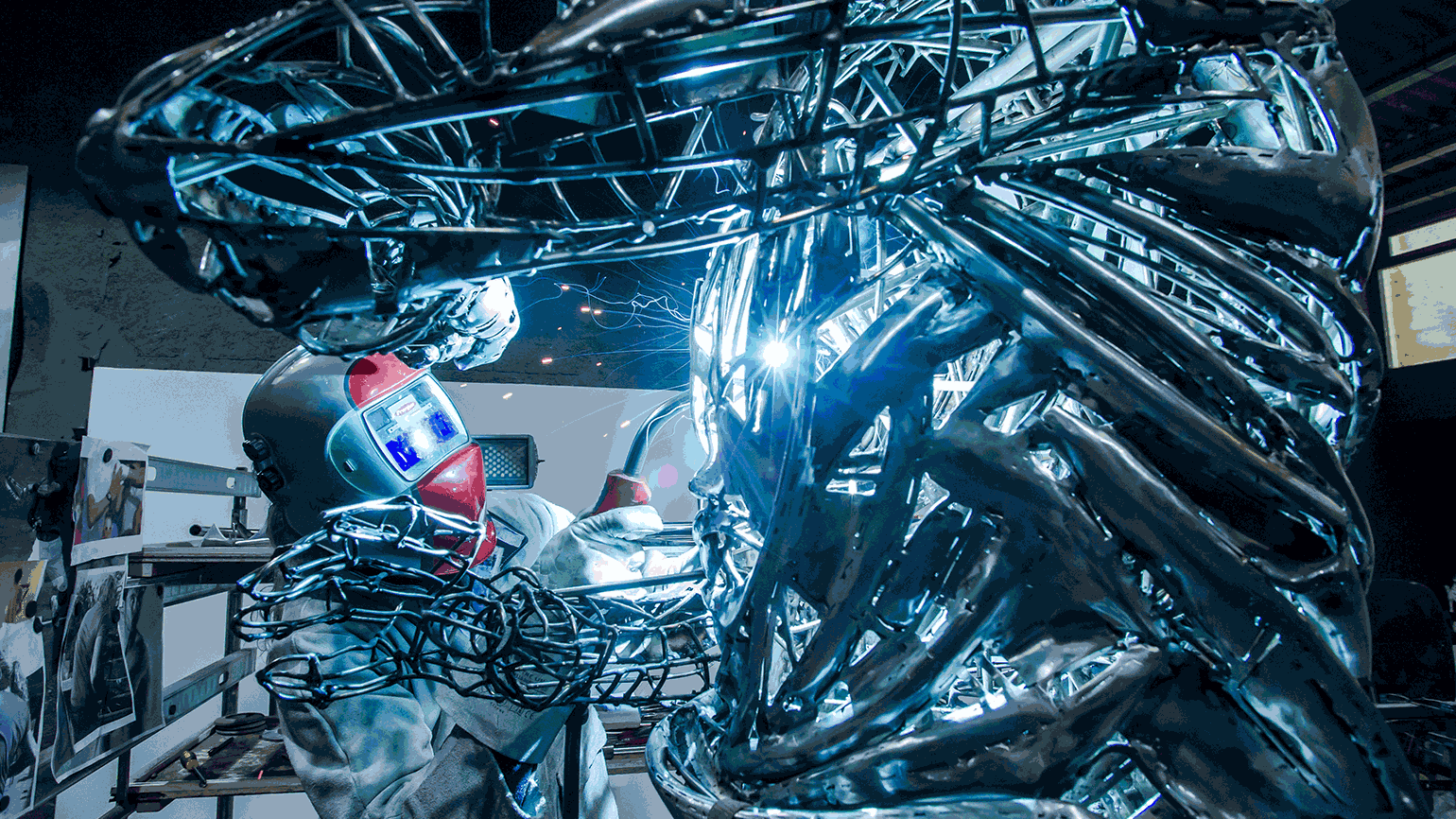
A tennis legend in stainless steel
Three meters high, five meters wide: after yet another victory at the French Open, a monument to Spanish tennis pro Rafael Nadal was created in the form of stainless steel statue. The artwork was crafted by Diez Fernandez over the course of a year. “When I heard that a proposal had been floated to create a tribute to Nadal, I got in touch with the French tennis association and ended up being commissioned to make it,” explained Diez Fernandez. The artwork can now be admired at the Roland Garros stadium in Paris. Click here to experience the creative process behind this impressive work of art.
Many of his other sculptures can be enjoyed in various galleries, museums, and public places. The artist also sells to private collectors and is setting up his own studio in Centelles, Barcelona. He’s involved in art projects all over the world—in France, Germany, Singapore, the United Arabic Emirates, and Taiwan. But regardless of the work or where it’s located, it’s clear at first glance that it’s by Diez Fernandez. His distinctive style is evident throughout.
Photo: Xavier Pladellorens

Anyone called Stahl just has to weld steel
“Stahl” is the German word for steel, so you could say that Andrea Stahl is an example of nominative determinism in action. Irrespective of whether it’s a metal sculpture or a stylish piece of steel furniture, welded artworks are her passion. What might sound like a professional name is in fact just a fortunate coincidence. “I was 19 when I started working with steel. What I hadn’t reckoned with is that my name would come to reflect my profession,” is Stahl’s delighted response to this “brilliant piece of marketing”. One thing soon becomes apparent when you chat with the Swiss artist: anyone who talks about their job with so much heart and passion has clearly found their calling. “It doesn’t feel like work,” is something that motivates her artistic endeavors every day. Stahl has now been creating welded artworks for 30 years and sees her job as the ultimate in fulfillment.
With her strapline “Stahl by Stahl”, her independence threw up new challenges—making a living as an artist has never been easy. One of the paths that set her on her way to becoming an artist was to run welding courses, which she did for around 20 years. This gave her a secure income stream and the support to start producing her own work. Initially, she only spent about 20% of her time on art, with the courses accounting for the other 80%. This has gradually reversed over the years, and means she can now focus more and more on the creative side.
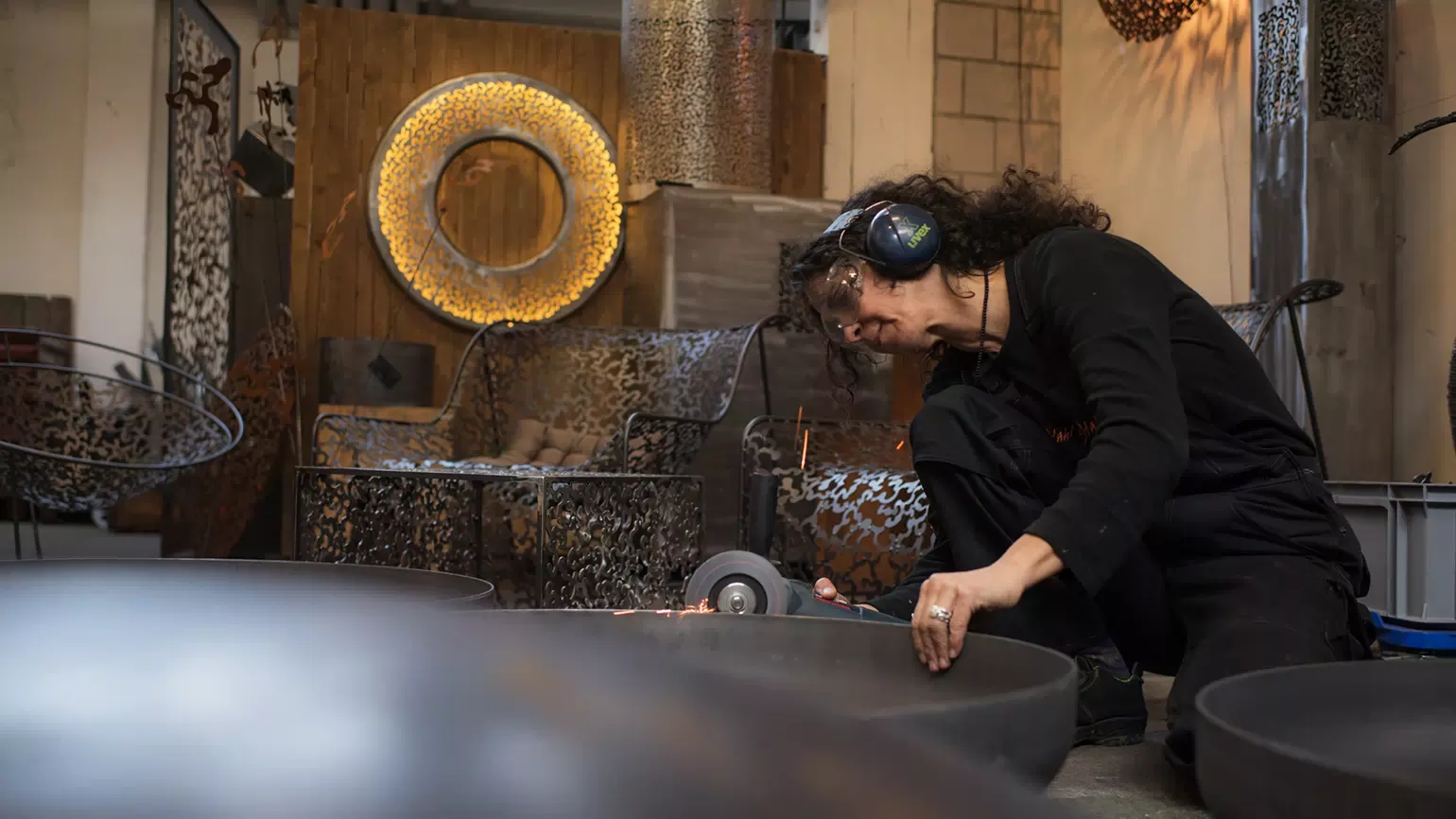
Welded art for the home
Stahl’s objective is to make something that’s heavy appear light. It could be a fire bowl, a chair, or a lamp—the combination of “beautiful” and “functional” is reflected in every one of her artistic items of furniture. She calls it “practical art”—and is repeatedly astonished by how quickly she’s able to create something new. “The most fascinating aspect of welded art is its speed. I can go into my workshop in the morning and come out at the end of the day with a table. The ability to create something very quickly, something that is also sturdy, continues to captivate me every day,” explains Stahl.
She came to specialize in furniture by chance: “I didn’t like any of the furniture that was around at the time. Nothing—beds, chairs, tables—really appealed to me, so I decided to make my own. Other people seemed to like my pieces, and that’s basically how I became a designer. To this day I really appreciate the combination of beauty and functionality.”
She displays her work at garden and design exhibitions in Switzerland, and has recently extended into France as well. “Personal interaction is very important to me, which is why I don’t have an online shop. I believe that artists should put themselves out there and talk to people directly. I need that impetus and I know it’s the approach that works for me,” concludes Stahl.
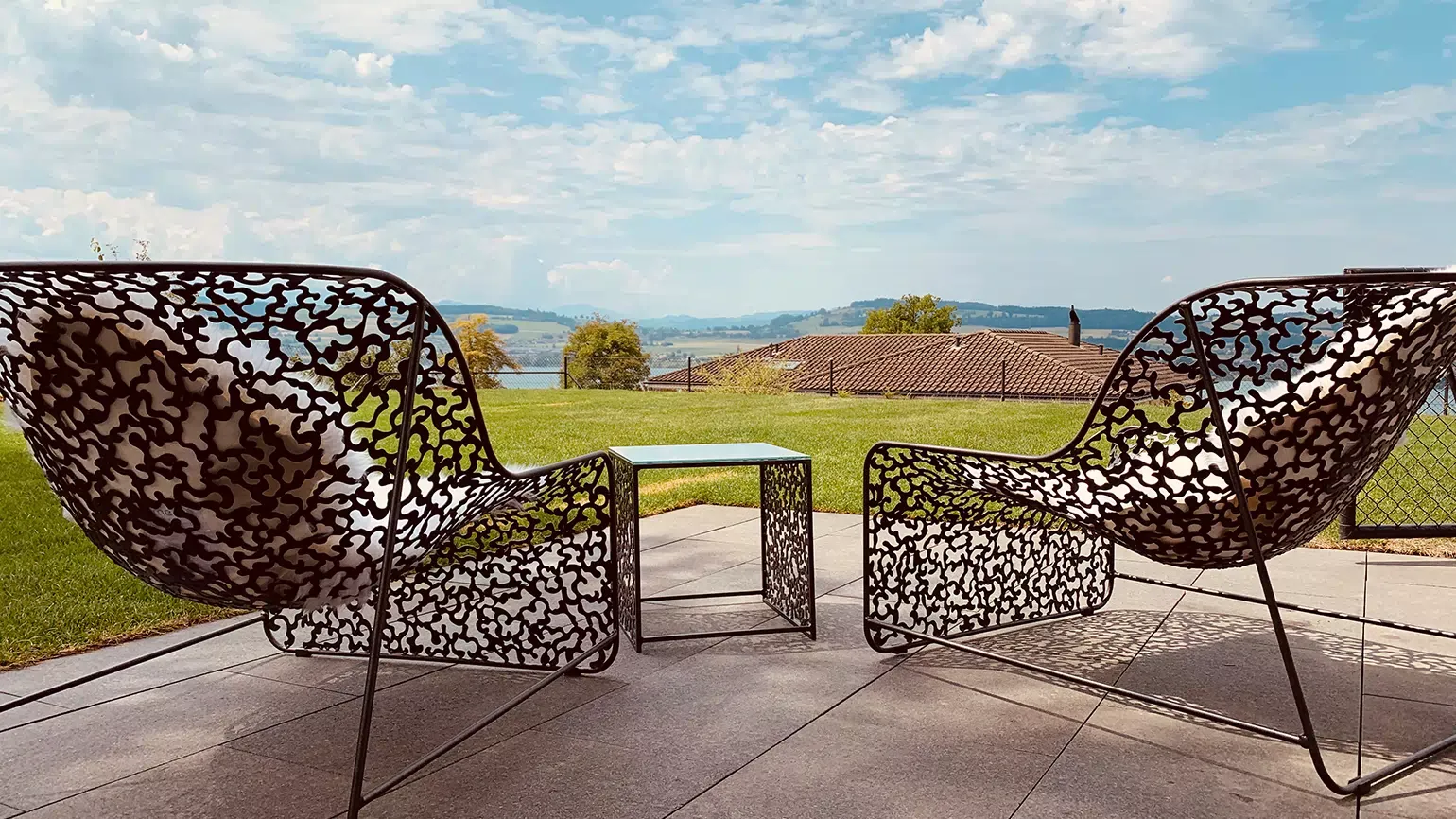
Sculpture for the 2024 Olympic Games
Surmin—better known by his alias Shoodrik—isn’t one to let such a unique opportunity go to waste. Using thousands of bicycle parts, he welded a 2.3 meter high tower that in addition to being visually striking, also conveys a powerful message. It is a statement against environmental pollution and our society’s throwaway mentality.
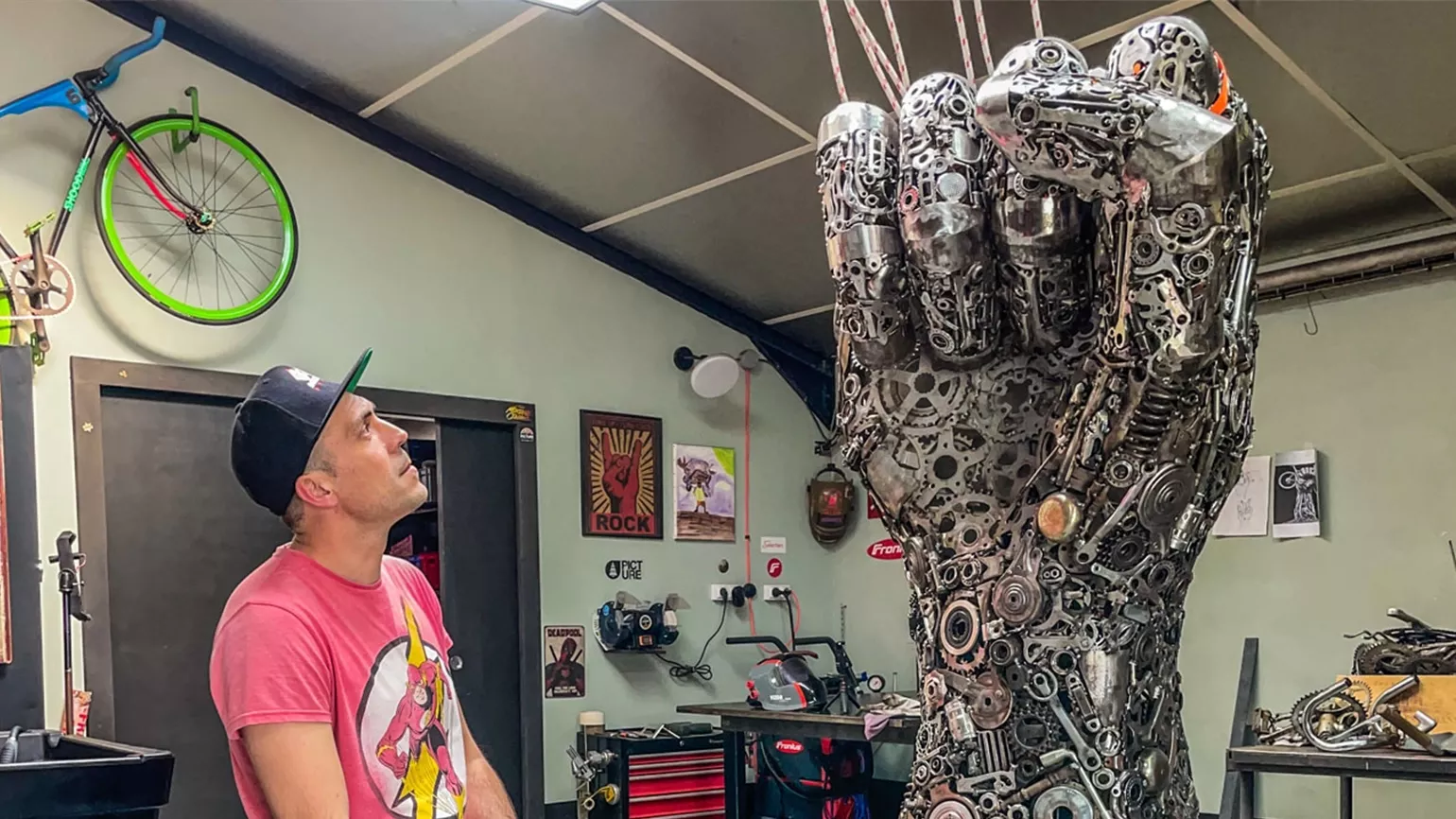
Taking a stance against environmental pollution
Shoodrik lives on Île de Ré, a popular vacation island on the Atlantic coast of France. The island is home to more bicycles than people—and the scrap that comes with them. He sees this not as waste, but as raw material. To create his piece for the Olympics, Shoodrik collected over 12,000 individual parts together with the “Icycle” association, which works with a prison to refurbish bicycles. Everything had to be derusted, cleaned, and reassembled by hand—from pedals to frames and hubs.
While his art is a response to the environmental impact around him, it also represents an appeal for a global rethink, prompting people to reuse resources instead of wasting them. Rising to a height of 2.3 meters, this totem not only stands for more sustainability but also embodies the endurance and strength of Olympic cyclists. After all, countless hours, unwavering dedication and, last but not least, a lot of hard work go into procuring the materials alone.
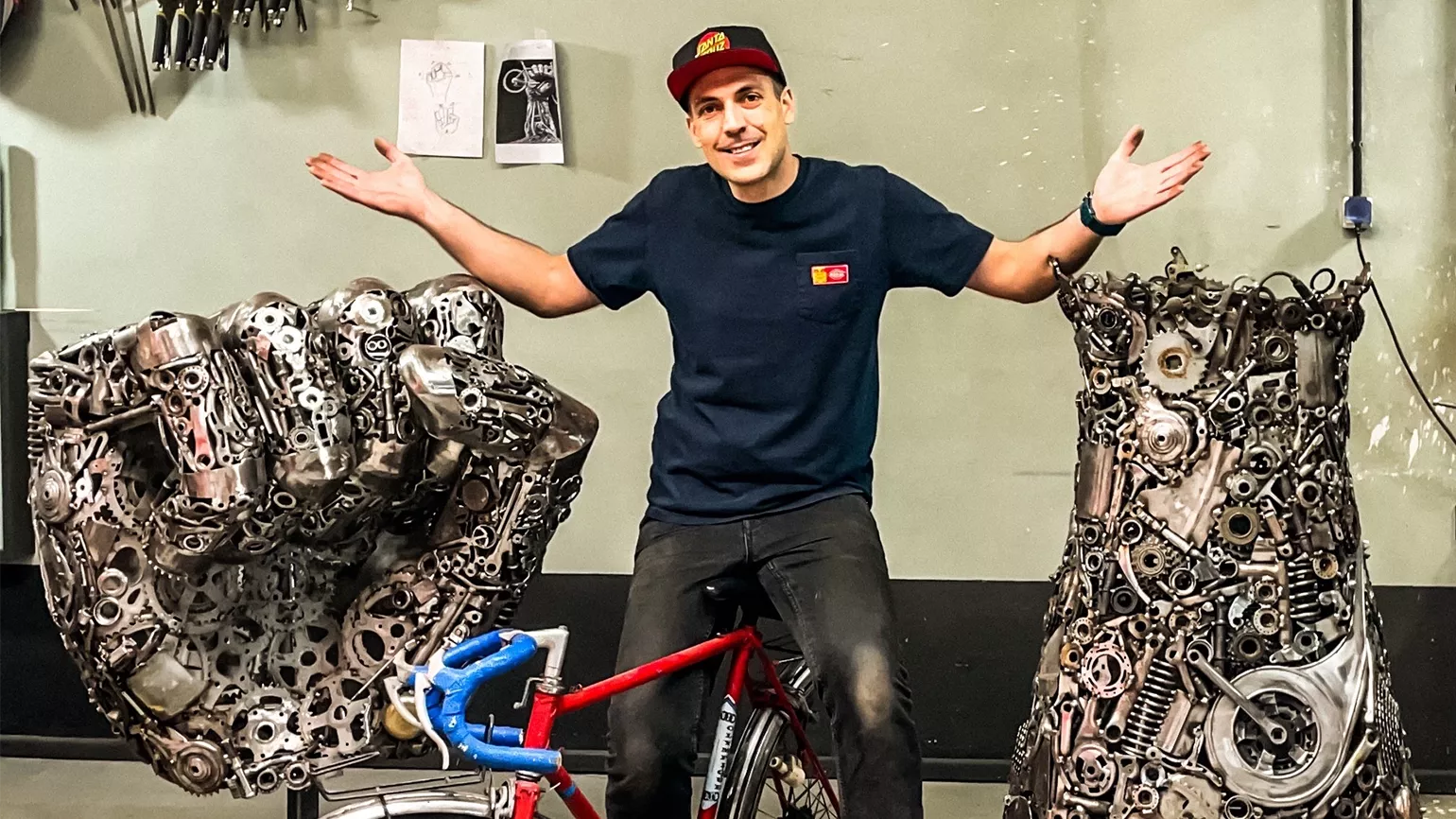
Pinocchio robot made from recycled metal
Surmin himself has had to prove his fighting spirit on several occasions. In 2016, he took the leap into the unknown and set himself up as a full-time welding artist—without ever having completed any formal training. Besides his creative work, Shoodrik is committed to education and giving talented young people a helping hand. To this end, he is involved in the opening of a new training center for welding technology in Brittany, where two of his sculptures will be on permanent display. His aim is to get young people interested in sustainable art and crafts.Shoodrik’s latest welding project is a Pinocchio robot made from recycled metal, which comes to life in a short film. This project, too, clearly conveys that creativity can arise from what other people throw away. Shoodrik is an artist whose work centers on welding machines and his own vision. His pieces speak a clear language—telling about responsibility, change, and the beauty that lies in the inconspicuous.
MORE IMPRESSIVE WORKS OF ART
Whether in Canada, Spain, or Switzerland—artists such as Baker, Diez Fernandez, Stahl and Surmin are spreading the beauty of welded art around the world. They’re creating something new, making something heavy appear to float, and demonstrating how multi-faceted the craft of welding really is. Their work reveals how even an old and traditional joining process such as welding is still capable of springing surprises, stimulating discussion, and broadening horizons. Welding as an artform is intoxicating. It encourages us to look at things from a different perspective and gives us the opportunity to pause for breath in a world that appears to be spinning ever faster—a world that would be even more humdrum were it not for art.
Visionary
welding starts with the right equipment.
At SCHWEISSEN & SCHNEIDEN in
Essen, we will be demonstrating the technology behind the art of precision
welding live.
Visit us at stand 3B55—we look forward to welcoming you in
person!
